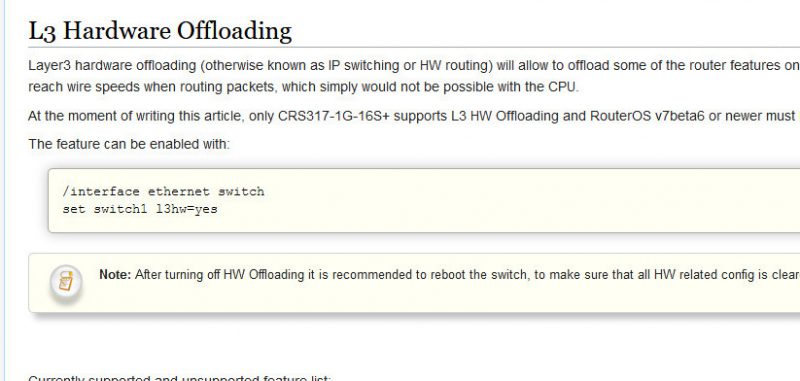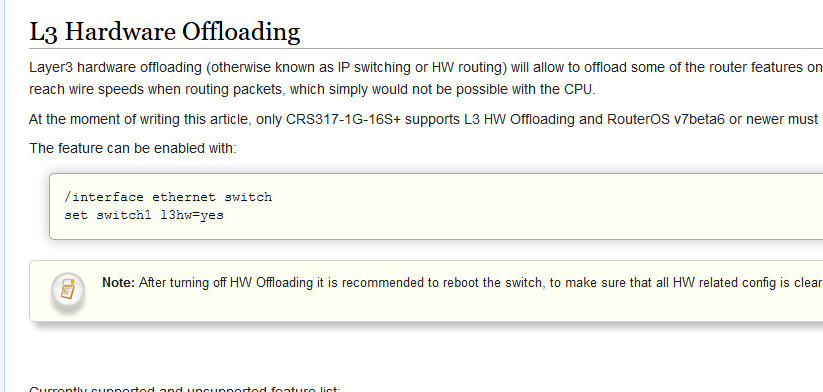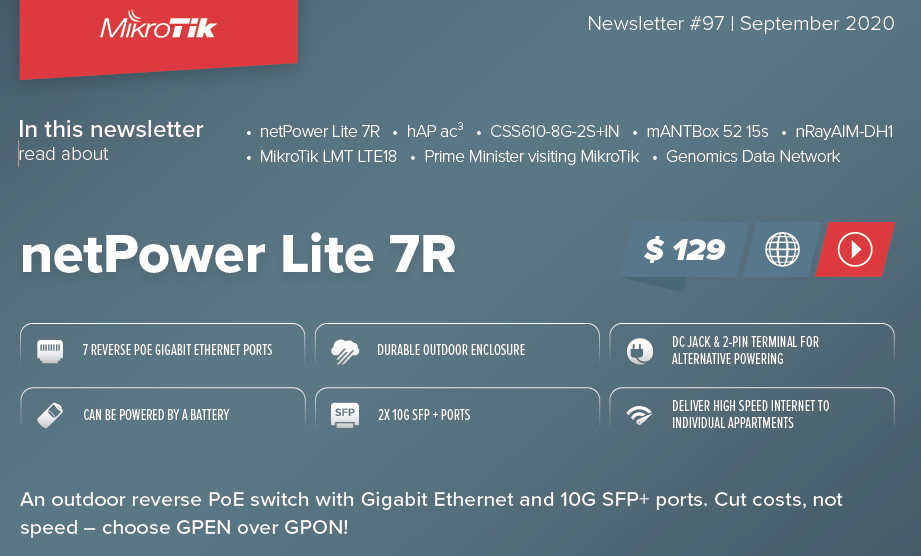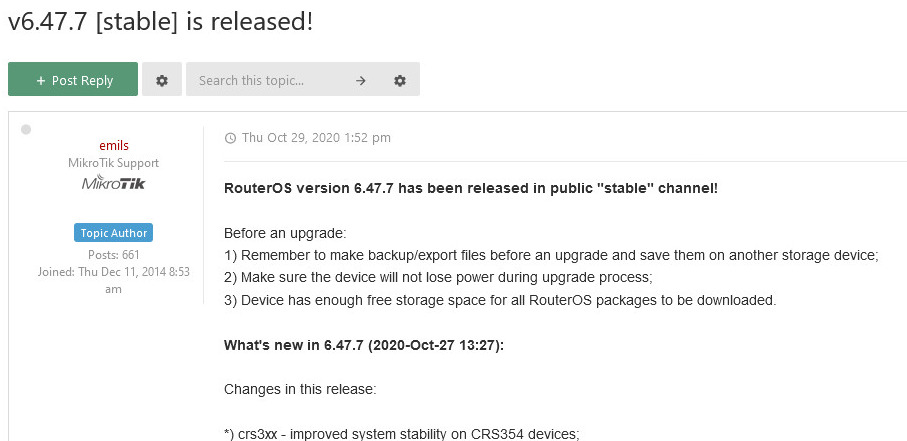
はじめに
最近、10GbpsなRouterboard製品も増えてきており日本でもユーザーが増えてきているわけですが、その中でもCRSシリーズを輸入している方が増えているようです。しかしながら実際に使ってみると機能が不足している、という呟きを目にすることがあります。この辺りは公式サイトのハードウェアカタログや公式Wikiにも書いてあるのですが、中々にそこに全て目を通していただくのは難しいことは重々承知しております。
Mikrotikも頑張ってるはずだけどなぁと呟いたところ以下のような反応をいただきました。
該当の呟き
最近お相手していただいているAlagas NetworkさんからWikiの情報を共有いただきました。
公式Wiki
L3 Hardware Offloading
Layer3 hardware offloading (otherwise known as IP switching or HW routing) will allow to offload some of the router features on to the switch chip. This allows to reach wire speeds when routing packets, which simply would not be possible with the CPU.
At the moment of writing this article, only CRS317-1G-16S+ supports L3 HW Offloading and RouterOS v7beta6 or newer must be used.
現時点ではL3 HW offload実装が進んでいたり実装されたりしているようです。
| Feature | Status | Description |
| IPv4 Unicast | HW | Depending on the complexity of routes in routing table, max HW accelerated route count could change (see table below for min-max supported route count for each hardware). Whole-byte IP prefixes (/8, /16, /24, etc.) occupy less HW space than others (e.g., /22). If HW route limit is reached new routes will fall back to CPU, except cases when newly added route overlaps with already existing routes processed by hardware. In this case destinations that were processed in hardware will continue to be processed in hardware. The user should choose the device with HW capability large-enough to store all the routes. |
| IPv6 Unicast | CPU | |
| IPv4 Multicast | CPU | |
| IPv6 Multicast | CPU | |
| ECMP | HW | See hardware limits in the next table. |
| “blackhole” routes | HW | This feature enables the possibility to drop D/DOS attacks at wire speed |
| “prohibit” routes | CPU | |
| “unreachable” routes | CPU | |
| gateway=<interface_name> | HW/CPU | This works only for directly connected networks. Since HW does not know how to send ARP requests, CPU sends ARP request and waits for a reply to find out a DST MAC address on the first received packet of the connection that matches a DST IP address. After DST MAC is determined, HW entry is added and all further packets will be processed by switch chip. |
| Bridge | HW | Routing from/to bridge interface |
| VLAN | HW | Routing between VLAN interfaces |
| LACP | HW | /interface bonding |
| Firewall | FW | Only Fasttrack connections gets processed by HW, which means that CPU is processing packets until connection gets fasttracked. |
| NAT | FW | NAT rules applied to the offloaded Fasttrack connections are processed by HW. |
| QoS | N/A |
少し情報を調べてみるとどうやらCPUの「98DX8216」を搭載した製品だけかなーと思ったら、先日アップデートが公開されているRotuerOS 7.1beta2には以下の更新内容が書かれており、対応製品が増えています。
!) added Layer3 hardware offloading support for CRS309-1G-8S+IN, CRS312-4C+8XG-RM and CRS326-24S+2Q+RM;
自分はCRS317-1G-16S+を持っているの折を見て環境に組み込んで確認してみようかと思います。
皆様も試す時は、この記事執筆時点でRouterOS v7がdevelopment(開発版)であることを十分に理解した上でインストールして検証してください。



